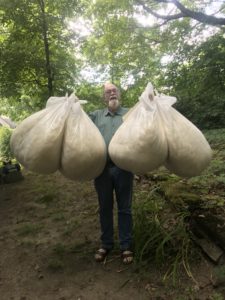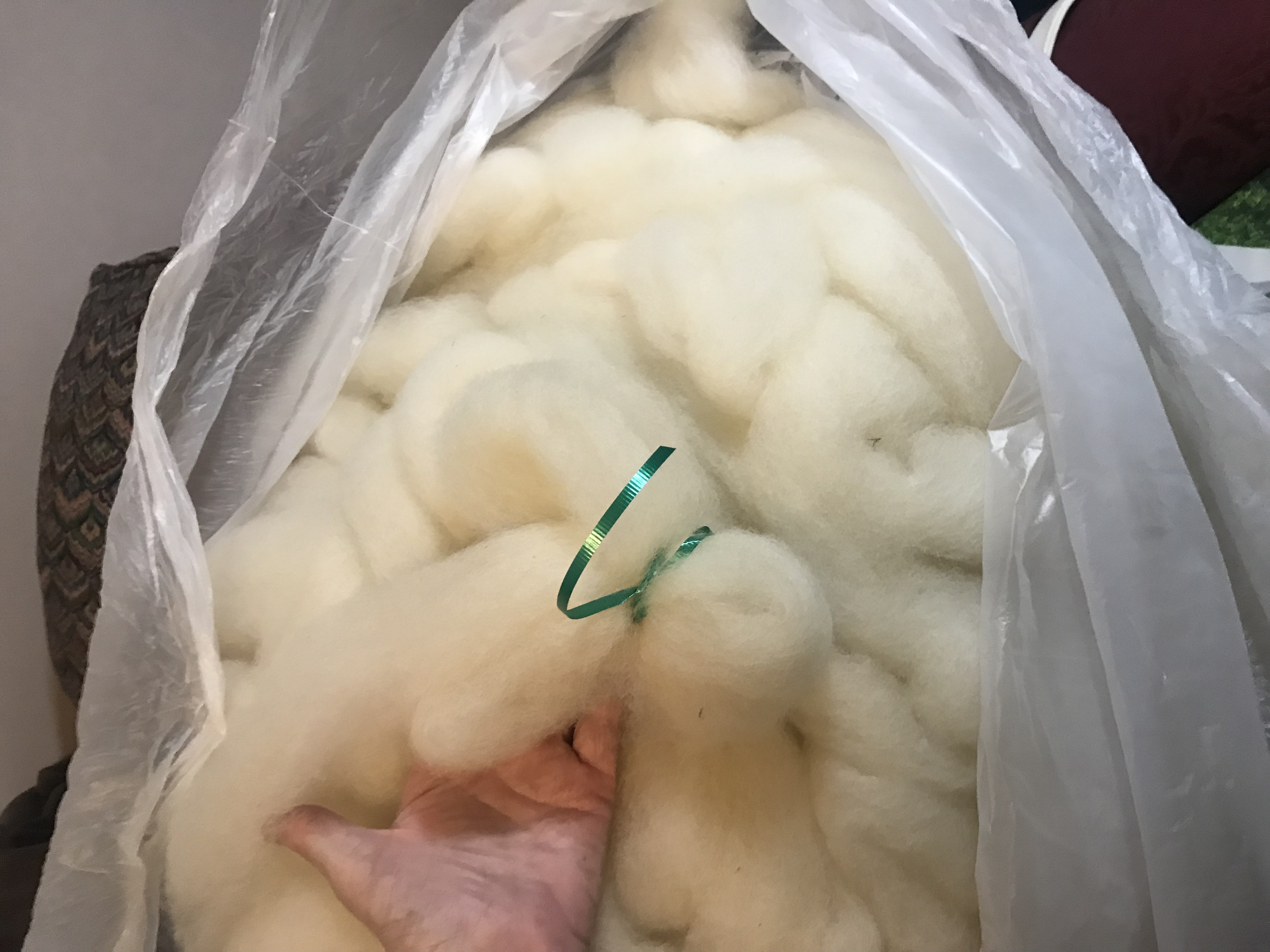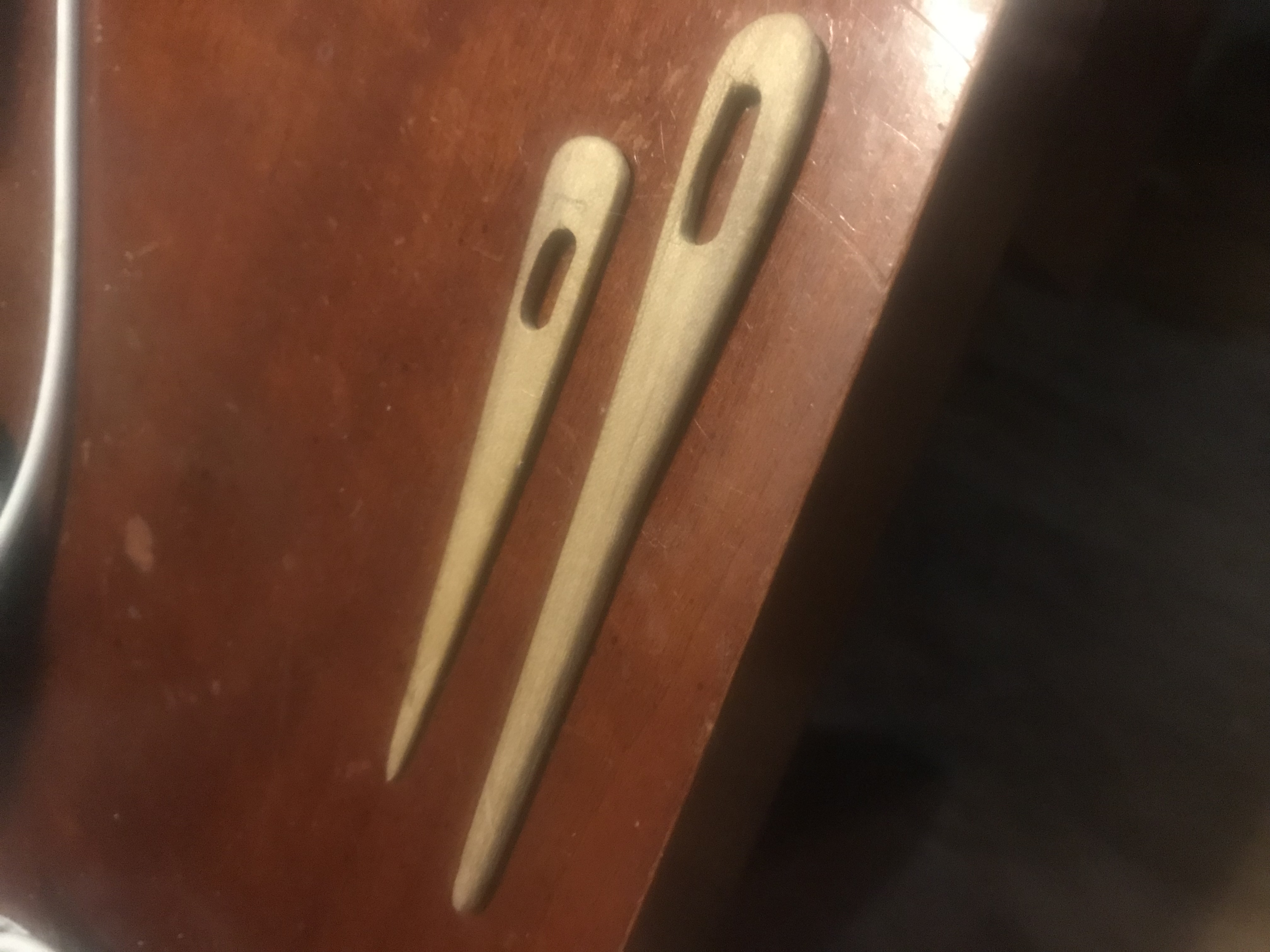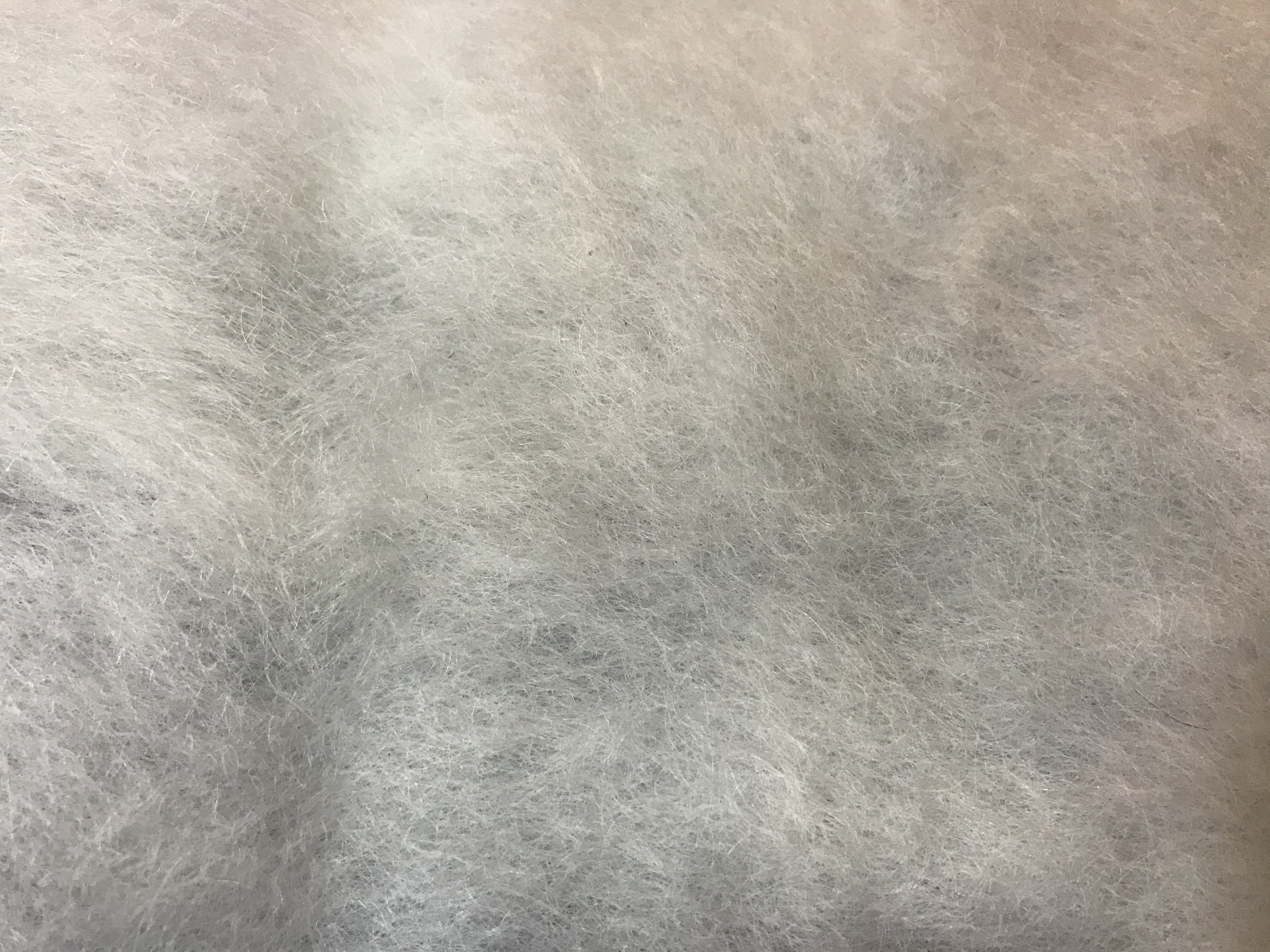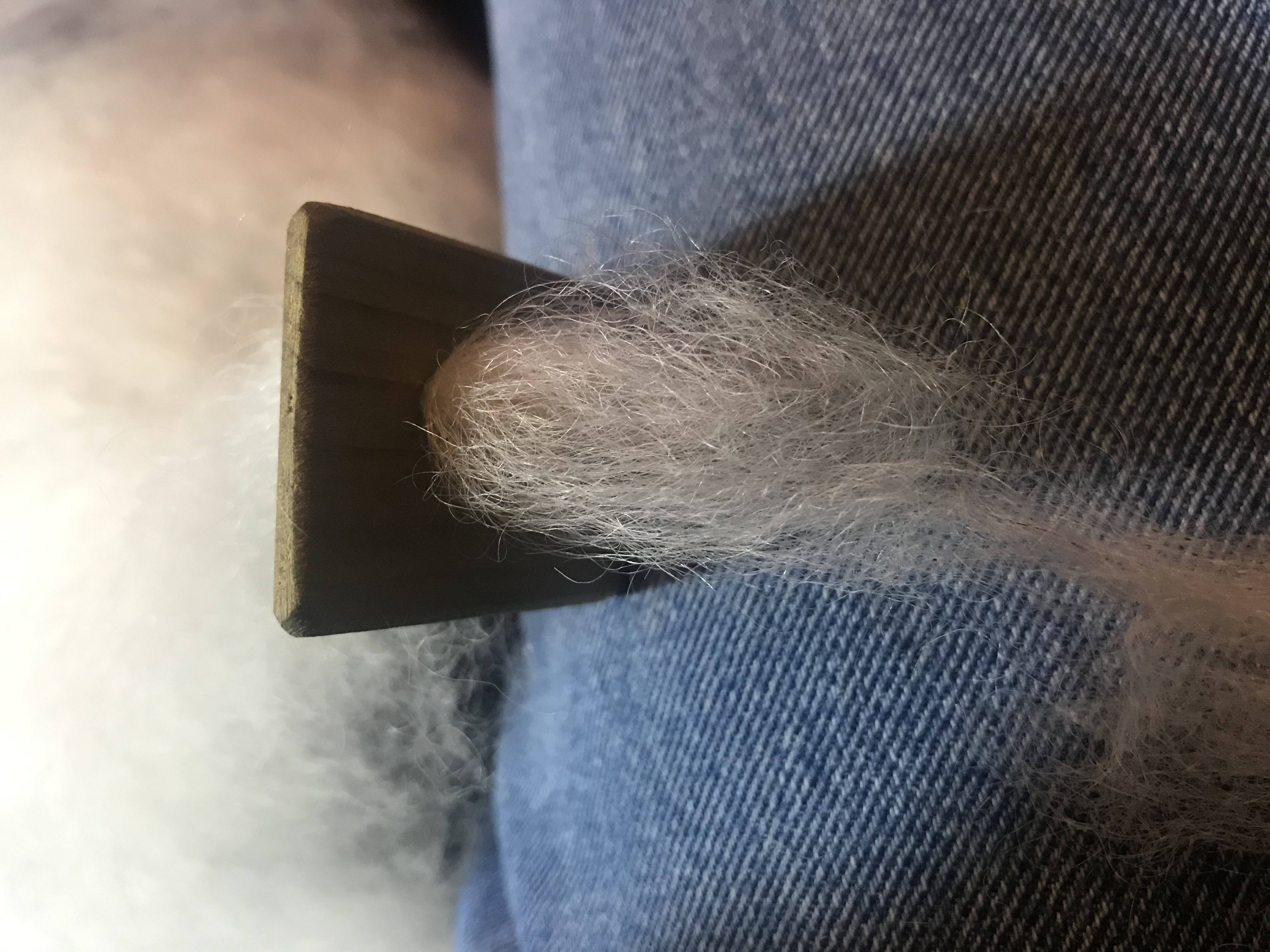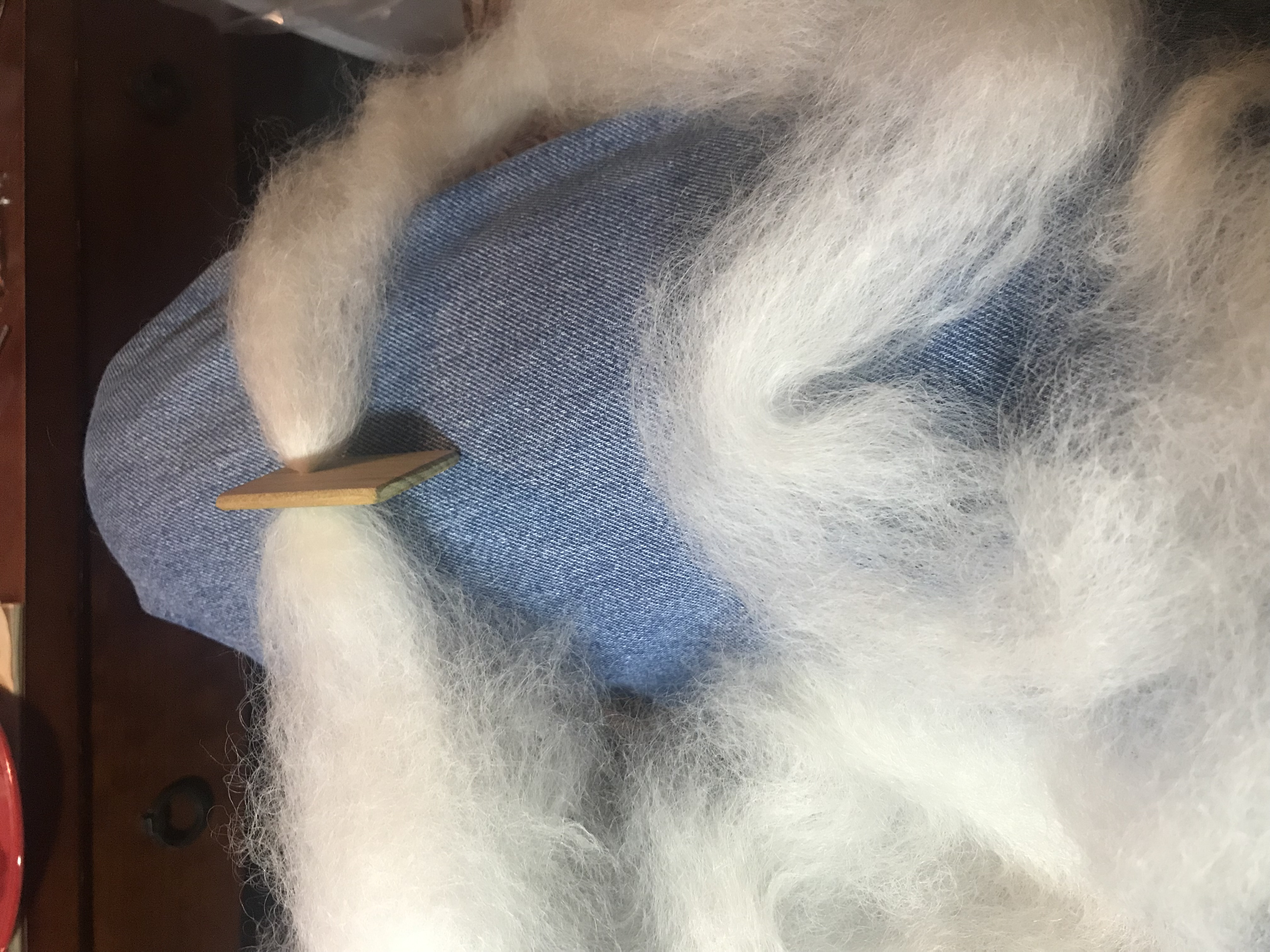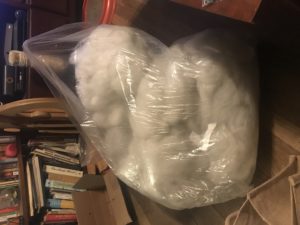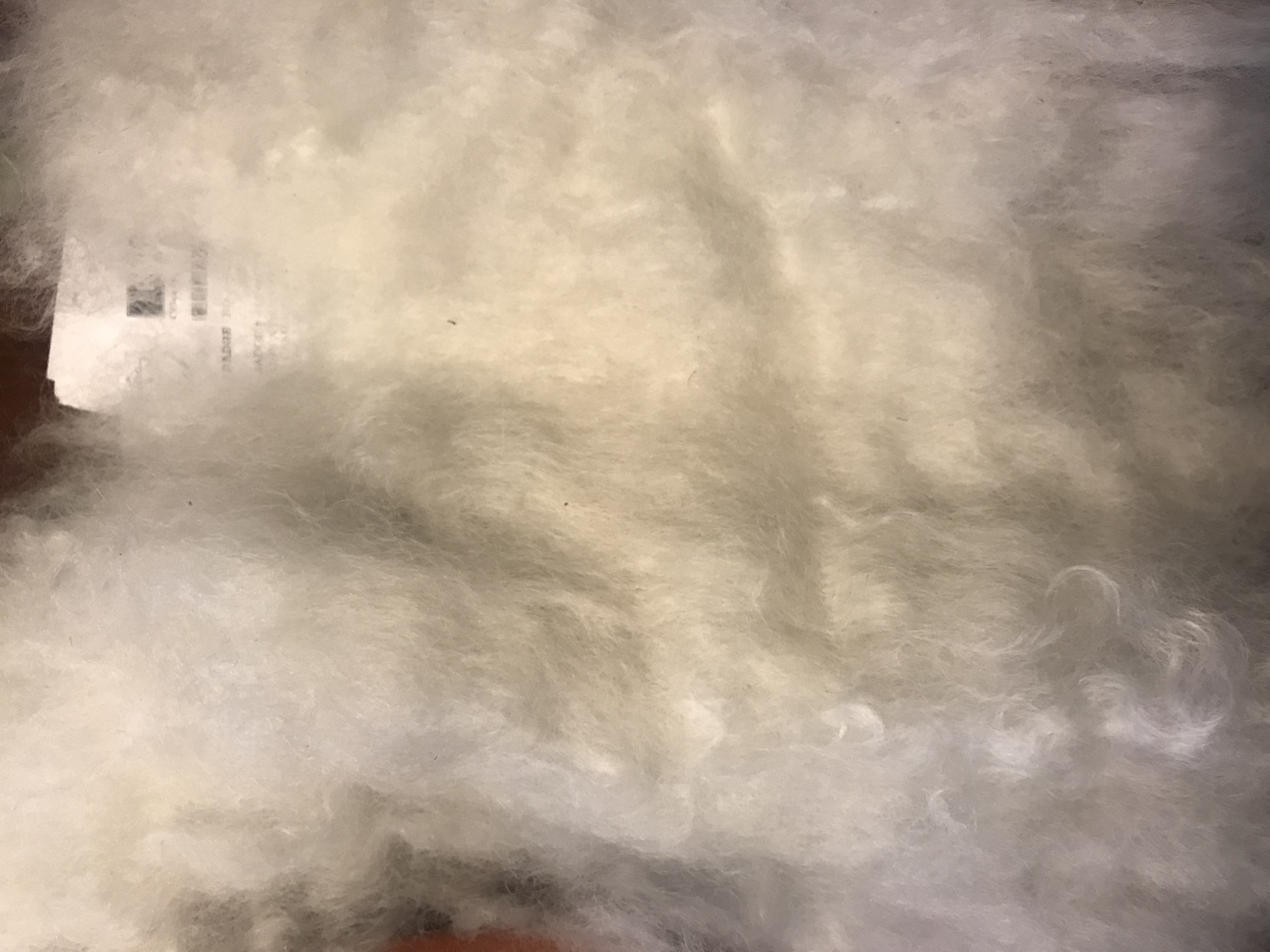Socks
I have recently had some success knitting socks. Being the antisocial dork that I am, I taught myself to knit, so I’ve had to break some bad habits (such as total disregard for stitch counts, stitches-per-inch, you know- those fussy bits.)
I’ve joined a knitting guild, though, and peer pressure (OK, maybe it’s pride) has made me step up my game… Rough edges and dropped stitches simply don’t pass muster.
So, after years of knitting I have finally achieved an expertise that might be optimistically termed “intermediate”, and have the minimum skill as required to knit socks… Herewith, the proof!
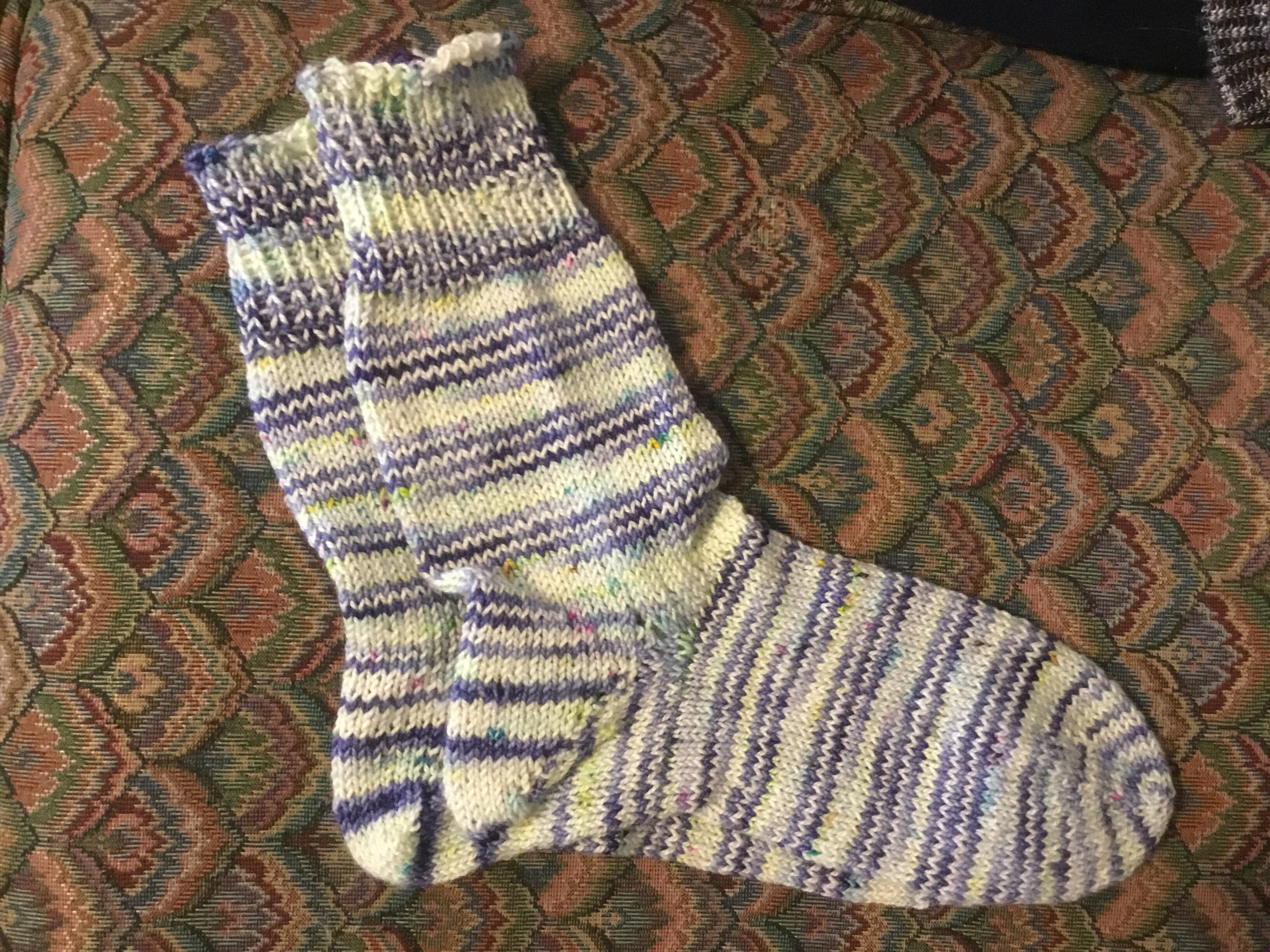
For the knitters, I can’t point to a particular pattern as this is an amalgam of whatever toe I felt like doing, finding a heel I could understand, and Jeny’s Surprisingly Stretchy Bind-off..
The self-striping yarn worked pretty well, eh?
